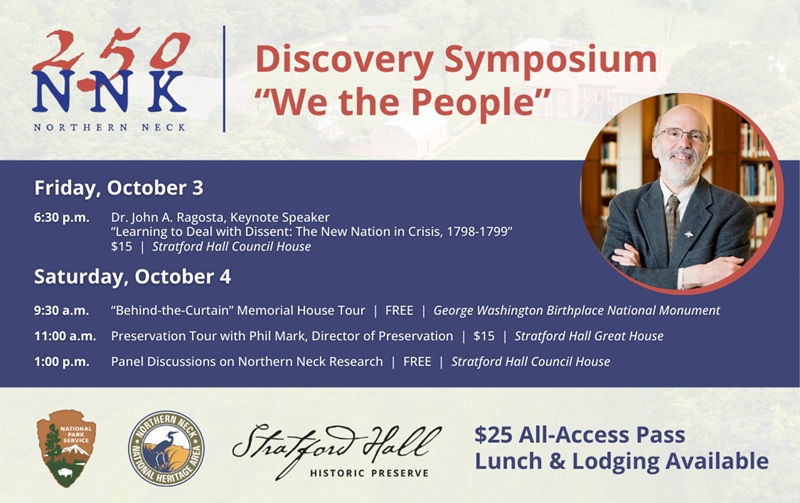Speaker Series
We the People
We are a democratic nation of diverse people with different cultures, political ideas, and beliefs. Our diversity contributes to both tension and growth in American society.
All events are free of charge



Our Speakers
Dr. Woody Holton
January 26, 2025 at 2 p.m.
Forced Founders: Indians, Debtors, Slaves, and the Making of the American Revolution in Virginia
Where: University of Mary Washington, Dahlgren Campus, 4224 University Drive, King George, VA

In this provocative reinterpretation of one of the best-known events in American history, Dr. Holton shows that when Thomas Jefferson, George Washington, and other elite Virginians joined their peers from other colonies in declaring independence from Britain, they acted partly in response to grassroots rebellions against their own rule.
The Virginia gentry’s efforts to shape London’s imperial policy were thwarted by British merchants and by a coalition of Indian nations. In 1774, elite Virginians suspended trade with Britain in order to pressure Parliament and, at the same time, to save restive Virginia debtors from a terrible recession. The boycott and the growing imperial conflict led to rebellions by enslaved Virginians, Indians, and tobacco farmers. By the spring of 1776 the gentry believed the only way to regain control of the common people was to take Virginia out of the British Empire.
Forced Founders uses the new social history to shed light on a classic political question: why did the owners of vast plantations, viewed by many of their contemporaries as aristocrats, start a revolution? As Holton’s narrative unfolds, the old story of patriot versus loyalist becomes decidedly more complex.
Dr. Woody Holton holds a bachelor’s degree in English literature from the University of Virginia and a Ph.D. in American History from Duke University. He is currently a professor of Early American History at the University of South Carolina with a focus on economic history and on African Americans, Native Americans, and women.
His articles and reviews have appeared in American Historical Review, Journal of American History, Reviews in American History, William and Mary Quarterly, Journal of Southern History, Virginia Magazine of History and Biography, and other journals. Dr. Holton is also the author of four books. Abigail Adams, which won the Bancroft Prize. Unruly Americans and the Origins of the Constitution, which was a finalist for the George Washington Book Prize and the National Book Award, and Forced Founders: Indians, Debtors, Slaves and the Making of the American Revolution in Virginia, which won the Organization of American Historians’ Merle Curti award.
His most recent book entitled Liberty is Sweet: An Integrated History of the American Revolution introduces readers to academic historians’ numerous recent discoveries about the founding of the nation.
Dr. Jennifer Van Horn
February 23, 2025 at 2 p.m.
Material Culture and the
Making of America
Where: Historic Christ Church, 420 Christ Church Road, Weems, VA

Over the course of the eighteenth century, Anglo-Americans purchased an unprecedented number and array of goods. This presentation investigates diverse artifacts from portraits to gravestones, dressing furniture, and prosthetic devices to explore how elite American consumers assembled objects to form a new civil society on the margins of the British Empire. Artifacts emerge as key players in the formation of Anglo-American communities and eventually of American citizenship. Deftly interweaving analysis of images with furniture, architecture, clothing, and literary works, Van Horn reconstructs the networks of goods that bound together consumers in early America.
Moving beyond emulation and the desire for social status as the primary motivators for consumption, Van Horn shows that Anglo-Americans’ material choices were intimately bound up with their efforts to distance themselves from Native Americans and African Americans. She also traces women’s contested place in forging provincial culture. As encountered through a woman’s application of makeup at her dressing table or an amputee’s donning of a wooden leg after the Revolutionary War, material artifacts were far from passive markers of rank or political identification. They made Anglo-American society.
Dr. Jennifer Van Horn is an Associate Professor of Art History and History at the University of Delaware where she specializes in the fields of American art and material culture.
Her interests include eighteenth and nineteenth-century artworks, objects, and landscapes, material culture theories and methodologies, museum studies, and the contested production of historical memory.
She is a graduate of the Winterthur Program in American Material Culture, and the University of Delaware. She received her Ph.D. from the University of Virginia and held a postdoctoral fellowship at Smithsonian American Art Museum and National Portrait Gallery where she was awarded the Director’s Essay Prize.
She is author of two books Portraits of Resistance: Activating Art During Slavery, and The Power of Objects in Eighteenth-Century British America, which was a finalist for the George Washington Prize and was awarded an honorable mention for the American Society for Eighteenth Century Studies’ Louis Gottschalk Prize. She has also published articles in The Art Bulletin, American Art, Early American Studies, and the Winterthur Portfolio.
Dr. Van Horn serves as the president of the Historians of Eighteenth-Century Art and Architecture, and on the editorial boards of The Art Bulletin and the University of Delaware Press. Before joining the University of Delaware, she worked as assistant curator at George Washington’s Mount Vernon and taught at George Mason University and the Smithsonian MA Program in the History of Decorative Arts.
Dr. Kathleen Brown
March 23, 2025 at 2 p.m.
Good Wives, Nasty Wenches, and
Anxious Patriarchs: Gender, Race, and Power in Colonial Virginia
Where: Rice’s Hotel / Hughlett’s Tavern, 73 Monument Place, Heathsville, VA

Dr. Brown examines the origins of racism and slavery in British North America from the perspective of gender. Both a basic social relationship and a model for other social hierarchies, gender helped determine the construction of racial categories and the institution of slavery in Virginia. But the rise of racial slavery also transformed gender relations, including ideals of masculinity.
In response to the presence of Indians, the shortage of labor, and the insecurity of social rank, Virginia’s colonial government tried to reinforce its authority by regulating the labor and sexuality of English servants and by making legal distinctions between English and African women. This practice, along with making slavery hereditary through the mother, contributed to the cultural shift whereby women of African descent assumed from lower-class English women both the burden of fieldwork and the stigma of moral corruption.
Brown’s analysis extends through Bacon’s Rebellion in 1676, an important juncture in consolidating the colony’s white male public culture, and into the eighteenth century. She demonstrates that, despite elite planters’ dominance, wives, children, free people of color, and enslaved men and women continued to influence the meaning of race and class in colonial Virginia.
Dr. Kathleen Brown is a historian of gender and race in early America and the Atlantic World at the University of Pennsylvania.
Educated at Wesleyan University and the University of Wisconsin, Madison, she is author of Good Wives, Nasty Wenches, and Anxious Patriarchs: Gender, Race, and Power in Colonial Virginia, which won the Dunning Prize of the American Historical Association. Her second book, Foul Bodies: Cleanliness in Early America, received the Organization of American Historians’ Lawrence Levine Book Prize for cultural history and the Society of the History of the Early American Republic Book Prize.
Dr. Brown has been a fellow of the Omohundro Institute for Early American Studies at the College of William and Mary, the American Antiquarian Society, the National Endowment for the Humanities, and the Bunting Institute at Radcliffe College. She is also the recipient of a Guggenheim Fellowship that supported her research and writing her most recent book, Undoing Slavery: Abolitionist Body Politics and the Argument over Humanity.
Since 2017 she has worked closely with students on the Penn & Slavery project as the project’s lead faculty historian.
Dr. Brad Hatch
April 27, 2025 at 2 p.m.
The Kidnapping of Pocahontas, Politics, and Mythmaking in
Patawomeck Country
Where: Rappahannock Indigenous Conservation and Education Center, 2570 Newland Road, Warsaw, VA

In 1613 one of the most famous events in early American history happened on the Northern Neck, at the Patawomeck village of Passapatanzy in modern-day King George County. The kidnapping of Pocahontas has been portrayed in history and popular culture as a betrayal of Wahunsenacawh’s daughter by the Patawomeck werowance, Japazaw, for over four centuries. However, from the moment it happened, the narrative surrounding this event was controlled by English colonizers with very specific, and nefarious, goals. This presentation takes an Indigenous-centered approach to that specific event, understanding it in reference to the larger social, political, and cultural contexts that were at play during the time. The myth that arose from this highly complex event illustrates how Indigenous history has been manipulated over centuries by non-Indigenous people to justify taking land, genocide, and denying identity. A Patawomeck perspective helps us understand why traditional colonial narratives must be critically examined and how a more complete history is understood through comparison, context, and a less provincial approach to research.
Dr. Brad Hatch is an enrolled citizen of the Patawomeck tribe, serves as chief judge on the tribal council, is a traditional knowledge keeper, and a trained archaeologist focused on material culture and historic preservation.
He earned his BA in historic preservation from the University of Mary Washington, his MA in anthropology from the College of William and Mary, and his PhD in anthropology from the University of Tennessee. His research focuses on community, identity, and material culture in the Potomac River Valley, and he is one of only two remaining master makers of the Patawomeck eel pot. He is employed by the Navy as the cultural resource manager for Naval Support Facility Dahlgren in King George County, Virginia, where he is responsible for the preservation and management of dozens of archaeological sites spanning thousands of years of human history in addition to over 100 historic buildings and cultural landscapes that tell the story of land use and occupation at Dahlgren over centuries. Dr. Hatch is a lifelong resident of White Oak, in Stafford County, Virginia, and, like the majority of his tribal community, lives fewer than 10 miles from ancestral villages along Potomac Creek.
Dr. Lisa Wilson
May 25, 2025 at 2 p.m.
A History of Stepfamilies in
Early America
Where: George Washington Birthplace National Monument, 1732 Popes Creek Road, Colonial Beach, VA

Based on her book of the same name, A History of Stepfamilies in Early America, Lisa Wilson counters the modern notion that stepfamilies are the unique burden of the present. They were, in fact, quite common in the historical past and were the subject of popular culture and the lived experience of many.
George Washington’s family was one such stepfamily. Washington was the father of the country and yet had no biological children of his own. He was, however, a doting stepfather and step-grandfather.
Wilson also suggests the stories of early American stepfamilies provide us with insights about our own families today.
Dr. Lisa Wilson is the Charles J. McCurdy Professor Emeritus of American History at Connecticut College.
She received her undergraduate education at Franklin and Marshall College and her masters degree and Ph.D. from Temple University.
Dr. Wilson’s book, Ye Heart of a Man: The Domestic Life of Men in Colonial New England, won the Homer D. Babbidge Jr. Award from the Association for the Study of Connecticut History, the Phi Alpha Theta Book Award, and was selected as an outstanding book by the University Press Book for Public and Secondary School Libraries. She is also the author of Life After Death: Widows in Pennsylvania, and A History of Stepfamilies in Early America.
She is the recipient of several major fellowships in her career including the Andrew W. Mellon Faculty Fellowship in the Humanities and the Charles Warren Center Fellowship, both at Harvard University; National Endowment for the Humanities Fellowship at the Massachusetts Historical Society, and an American Antiquarian Society/National Endowment for the Humanities Fellowship.
Dr. Wilson is the former Chair of the History Department at Connecticut College and was awarded the 2019 Helen Brooks Regan Faculty Leadership Award for outstanding leadership. Her historical research interests focus on North America and the Caribbean, and she is currently working on a book about experiences of seventeenth-century women in Barbados.
Earlier Events
Symposium
The Power of Place
The Indigenous Northern Neck
November 1 & 2, 2024

This event took place at The Rappahannock Indigenous Conservation Education Center, 2570 Newland Road, Warsaw, VA 22572
Speaker Series
The Power of Place
By prompting us to transcend political boundaries and delve more deeply into our past, the concept of “place” offers a unique perspective for fully understanding our history
All events are free of charge
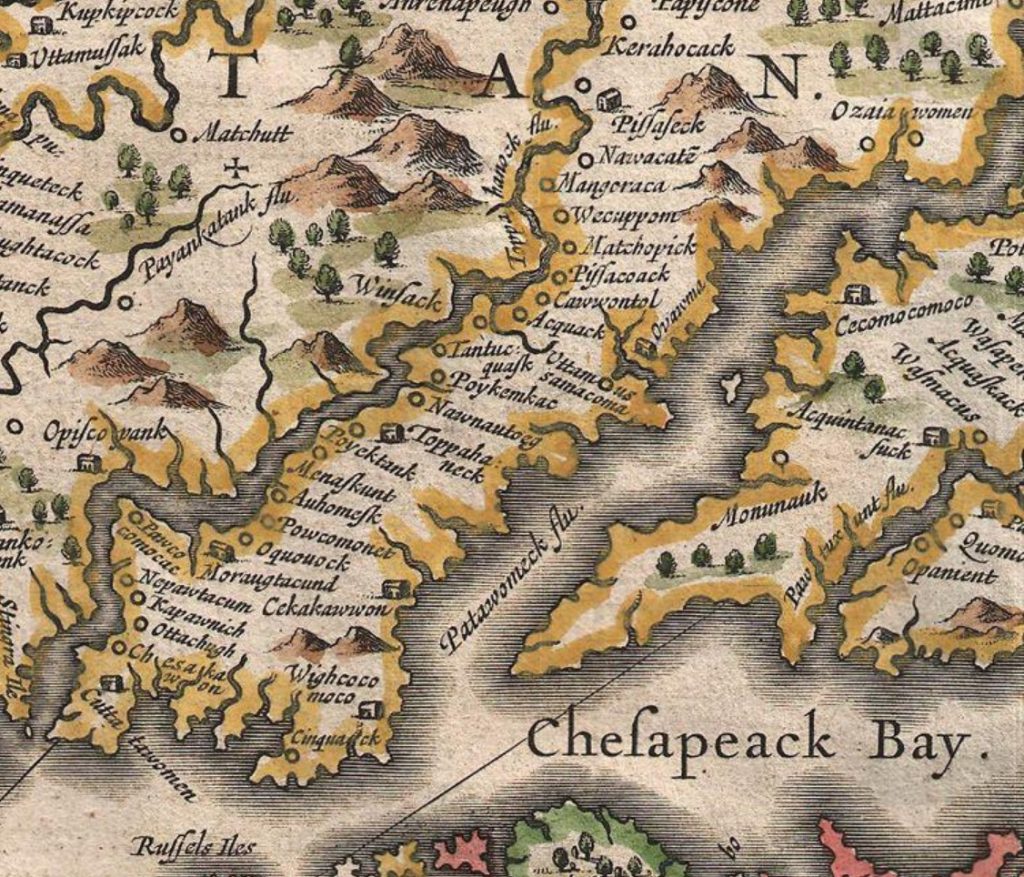
Our Speakers
Dr. Barbara Heath
February 11, 2024 at 2 p.m.
Conflict, Migration, and Early Settlement of the Northern Neck
Where: University of Mary Washington, Dahlgren Campus, 4224 University Drive, King George, VA
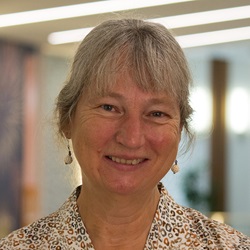
During the earliest decades of English colonization of the Chesapeake, the Potomac River Valley was a politically complex borderland between the colonies of Virginia and Maryland and Native American tribal groups. In this enlightening talk, Dr. Barbara Heath explores the significant ways in which life on the borderland shaped the development of the Northern Neck of Virginia.
Dr. Barbara Heath is Professor and Head of Anthropology at the University of Tennessee, where she has worked since 2006. She specializes in historical archaeology—archaeology of the recent past. For more than 40 years, she has worked on archaeological sites throughout Virginia, including a 20-year career as an archaeologist at historic houses and museums such as Colonial Williamsburg, Monticello, and Thomas Jefferson’s Poplar Forest. She served as president of the Council of Virginia Archaeologists and as president of the Society for Historical Archaeology, the international professional society of her field. Barbara is the author of Hidden Lives, The Archaeology of Slave Life at Thomas Jefferson’s Poplar Forest and, with Jack Gary, edited Jefferson’s Poplar Forest, Unearthing a Virginia Plantation. She also was co-editor and contributor to Material Worlds: Archaeology, Consumption, and the Road to Modernity, with Eleanor Breen and Lori Lee, and Artifacts that Enlighten: The Ordinary and the Unexpected with Linda Stone and Patricia Samford. She is currently working on two book projects centered on the archaeology of colonialism along the Potomac River, and on a third about the global exchange of cowrie shells in the past 300 years. Since 2011, she and her students have worked collaboratively with landowners, local archaeologists, and community members in a multi-year study of Chicacoan, a settlement of Algonquian-speaking Indians and their ancestors along the Coan River near Heathsville, Virginia; the site of the first permanent English settlement on the Northern Neck, and an early site of African enslavement.
Dr. Steven Harris-Scott
March 10, 2024 at 2 p.m.
A Place Apart–Bound Labor in Virginia’s Upper Northern Neck, 1645-1710
Where: Historic Christ Church, 420 Christ Church Road, Weems, VA
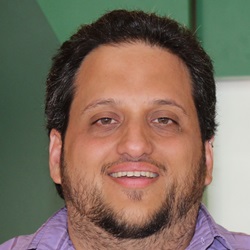
Bound laborers such as white servants and enslaved Africans were essential in early English Virginia, supplying the necessary labor to produce profit from tobacco for the colony’s landowners. This was even more important in Virginia’s “upper” Northern Neck region given that a less desirable strain of tobacco, oronoco, was grown there. Join Dr. Steven Harris-Scott as he explores how this difference had significant implications on the pattern of Northern Neck bound labor in the 18th century.
Dr. Steven Harris-Scott holds a PhD in History from George Mason University and an MA in History from the University of New Orleans. He has presented his work at numerous conferences, particularly the Virginia Forum where he is also a member of its Board of Directors and as of 2023, its president.
Dr. Scott is an affiliate of GMU’s Department of History and Art History, the Center for Mason Legacies, and the Institute for Immigration Research. He also serves as Academic Director at INTO George Mason, a center that educates international students who need additional English language support and cultural transition support to prepare for undergraduate and master’s degrees at GMU.
Dr. Julia King
April 14, 2024 at 2 p.m.
Finding Leedstown–What Archaeology Reveals about this Remarkable Place
Where: Hughlett’s Tavern
73 Monument Place, Heathsville, VA
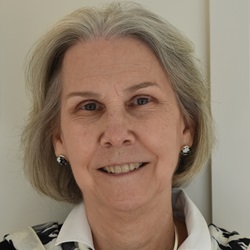
In 1937 an unusual find at a Native American site in Leedstown led to similar discoveries in modern museums throughout the country and sparked intriguing questions about the history of the site. Join Dr. Julia King as she explores the significance of Leedstown by placing it in multiple contexts.
Dr. Julia King is professor and chair of anthropology at St. Mary’s College of Maryland. She has 30 years experience studying, writing, and teaching about historical archaeology and Chesapeake history and culture. She has held fellowships with Harvard University’s Dumbarton Oaks, the Virginia Historical Society, and Winterthur Museum and has received six major grants from the National Endowment for the Humanities. From 2003 until 2011, Dr. King served as an Expert Member on the Advisory Council on Historic Preservation, a Federal agency that advises the president and Congress on matters of national historic preservation policy. Her book, Archaeology, Narrative, and the Politics of the Past: The View from Southern Maryland, received a Book Award from the American Association of State and Local History in 2013. In 2018, the Society for Historical Archaeology presented Dr. King with the J.C. Harrington Award in recognition of her scholarly contributions to the discipline. Dr. King is one of the youngest members to have received the Harrington. She has also received awards from the Register for Professional Archaeologists and the Archaeological Society of Virginia. Her current research focus includes Indigenous history and colonialism in the Chesapeake region. Since 2016, she has collaborated with the Rappahannock Tribe and landowners across the Northern Neck to uncover the region’s rich Indigenous and European history.
Chief Anne Richardson
May 5, 2024 at 2 p.m.
Indigenous Perspectives on the Northern Neck and Power of Place
Where: The Lodge at Cat Point Creek, 2570 Newland Road, Warsaw, VA
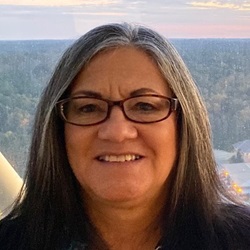
The Rappahannock People have inhabited the Northern Neck since the beginning. It holds a special place in the Rappahannock story and contains some of the most spiritually and historically significant places to the Tribe. In this talk, Chief Anne Richardson graciously shares her thoughts on the Northern Neck and Power of Place.
As Chief of the Rappahannock Tribe since 1998, Chief Anne Richardson is the first woman to lead a Virginia Indian tribe since the early 1700s. As a 4th generation chief in her family, she was instrumental in obtaining state (1983) and then federal (2018) recognition for the Rappahannock—recognition that confers sovereignty and other rights. While contending with the long legacy of displacement, discrimination, and disenfranchisement, Chief Richardson works to ensure a vibrant future for the Rappahannock and to preserve their lands and cultural traditions. Chief Richardson’s skills in reaching out to national, state, and local government, business, nonprofit, and individual resources are considerable, as evidenced by the Tribe’s governance and organizational accomplishments. Most recently, she worked in partnership with several conservation organizations to purchase 465 acres of their historic town Wecuppom on the Rappahannock River. The site unites the Tribe with their ancestral lands identified by Capt. John Smith in 1608, adjacent to the river that bears their name. This is a big step forward in fulfilling Chief Richardson’s vision of returning her Tribe to the great Rappahannock River Valley. As a part of that vision, she has protected critical habitat for eagles and waterfowl in the areas of the Rappahannock River Valley Wildlife Refuge and along the Chesapeake Trail. She has also partnered with the Chesapeake Conservancy, the Wilderness Society, and the US Fish & Wildlife Service to rematriate 465 acres of the Tribe’s ancestral homelands on the Rappahannock River and is working with them to acquire two other properties at the same location. She is leading the establishment of the Indigenous Conservation Council for the Chesapeake Bay, a nonprofit organization with the inaugural board members being the chiefs of the seven federally recognized tribes in Virginia. She is also leading the Tribe in the development of a Master Plan for Community & Economic Development, which will provide a path forward over the next five years, and a vision for the next generation of Tribal leaders. Chief Richardson serves on numerous boards and most recently was appointed by Secretary of the Interior Deb Haaland to the National Fish and Wildlife Foundation Board of Directors.
Dr. Philip Levy
June 9, 2024 at 2 p.m.
The Leedstown Resolutions–Connecting Consumerism and Revolution on the Northern Neck
Where: George Washington Birthplace National Monument, 1732 Popes Creek Road, Colonial Beach, VA
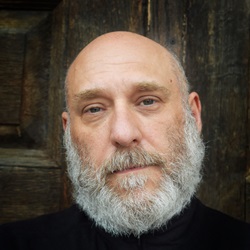
The Leedstown Resolves were one of the first protests against the 1765 Stamp Act and influenced public opinion in other American colonies. In this engaging talk, Dr. Levy explores how consumerism in the colonies shaped response to the Stamp Act, influenced revolutionary politics, and ultimately helped drive revolutionary sentiment on the Northern Neck.
Dr. Philip Levy is a Professor of History at the University of South Florida and is an Organization of American Historians Distinguished Lecturer. He is the author of several books many of which deal with George Washington both as a person and as a national icon. Where the Cherry Tree Grew: The Story of Ferry Farm, George Washington’s Boyhood Home (2013) and George Washington Written Upon the Land: Nature, Memory, Myth, and Landscape (2015) focus on the places of Washington childhood. The Permanent Resident: Excavations and Explorations of the Life of George Washington (2022), winner of the prestigious Society for Historical Archaeology James Deetz Award, explores the many sites of Washington’s life and how their stories have been shaped by archaeology and issues of memory and commemoration. His newest book, Yard Birds: The Lives and Times of America’s Urban Chickens, tells a very different story from his other work and explores the fascinating relationships, both past and present, between urban areas and domestic fowl.
© 2024 - All Rights Reserved.

